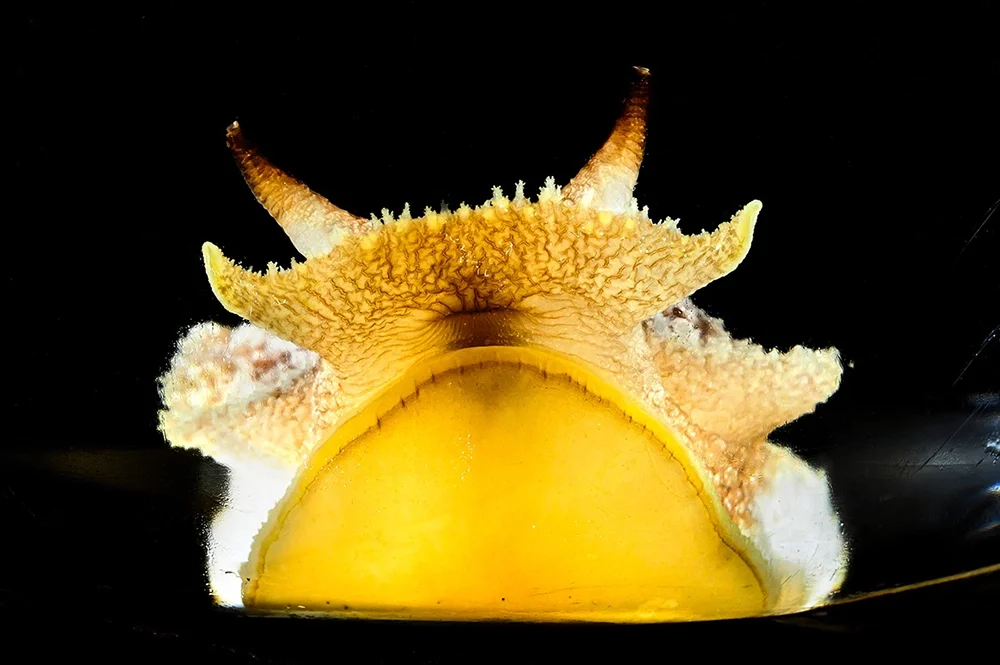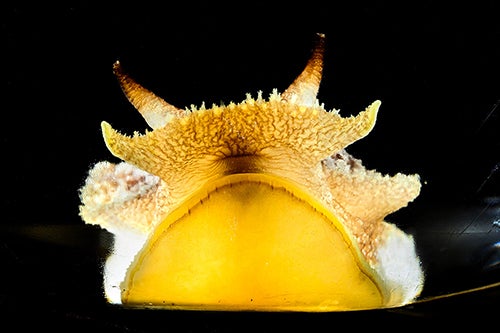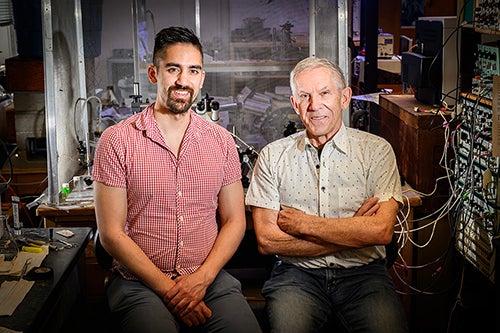

Hundreds of millions of years before the evolution of animals with segmented bodies, jointed skeletons or appendages, soft-bodied invertebrates like sea slugs ruled the seas. A new study finds parallels between the brain architecture that drives locomotion in sea slugs and that of more complex segmented creatures with jointed skeletons and appendages.
Reported in the Journal of Neuroscience, the study suggests that, rather than developing an entirely new set of neural circuits to govern the movement of segmented body parts, the insects, crustaceans and even vertebrates like mammals adapted a network of neurons, a module, that guided locomotion and posture in much simpler organisms.
“Sea slugs may still have that module, a smallish network of neurons called the ‘A-cluster,’ with 23 neurons identified so far,” said molecular and integrative physiology professor Rhanor Gillette, who led the new research.

“The question that we addressed in this study is whether the similarities we see between sea slugs and more complex creatures evolved independently or whether those with segmented body parts and appendages may have inherited their underlying neural circuitry from a soft-bodied, bilaterally symmetrical common ancestor,” he said.
To answer that question, Gillette and his colleagues, former graduate students Colin Lee and Jeffrey Brown, videotaped sea slug movements and combined that data with recorded responses to the stimulation of nerves and specific neurons in the sea slug brain.
“The predatory sea slug we studied, Pleurobranchea californica, uses cilia on its foot to crawl, paddling through secreted mucus,” Gillette said. “For a postural turn toward or away from a stimulus, it simply shortens one side of its body and escapes from other predators with a frantic, rocking swim – all driven by the A-cluster.”
Previous studies from Gillette’s laboratory showed that Pleurobranchaea engages in cost-benefit calculations every time it encounters another creature in the wild. If it is very hungry, the neurons that control its attack and feeding behavior are at a heightened state of arousal and it will go after nearly anything that smells like food. Under other circumstances, it will do nothing or even actively avoid the stimulus.
“This is a good idea if it doesn’t need the food and can avoid other cannibalistic Pleurobranchaea attracted by it,” Gillete said. “All these behaviors involve how the A-cluster coordinates with action choices.”
In mammals, a special hindbrain module called the reticular system translates specific instructions for action choices from higher brain regions for posture and locomotion, Gillette said. This region then sends the motor commands down to the spinal cord for final transmission to the muscles.
“In particular, the reticular system relies on critical serotonin-producing neurons to control body movements in posture and locomotion,” he said. “In the new study, we find that similar serotonin-producing neurons in the A-cluster of sea slugs are driving behaviors like pursuit, avoidance, and escape.
“In their relative simplicity, the sea slugs resemble in many ways the expected simpler ancestor of today’s complex animals,” Gillette said. “All the major circuit modules of action choice, translating that choice into motor commands, and motor pattern-generation found in the nervous systems of complex animals are also identifiable in the simpler soft-bodied sea slugs.”
The study offers the first evidence that the circuits driving locomotion in animals with complex bodies and behaviors “have close functional analogies in the simpler gastropod mollusks and may share a common inheritance,” Gillette said.
Gillette also is an affiliate of the Beckman Institute for Advanced Science and Technology and of the Center for Artificial Intelligence Innovation in the National Center for Supercomputing Applications at the U of I.
The Office of Naval Research supported this research.


